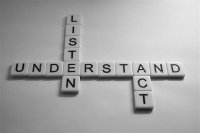The Stuff of Problem Solving: Discovering Concepts and Applying Principles
Your content has been saved!
Go to My Saved Content.Few would disagree that building critical thinking and creative problem solving skills is imperative for today's students. However, subject matter knowledge is equally important. The 21st Century Skills framework includes a Core Subjects section in addition to skills such as critical thinking and problem solving. The Framework for K-12 Science Education includes Core Ideas in addition to process skills.
You might say, "Of course! Everyone knows students need knowledge as well as skills. We have to teach content, too."
But what exactly IS content? Is it the stuff found in a textbook? Is it information? Is it the definitions, formulas and facts of a subject area?
The answer is: Yes -- but not really.
Understanding What Understanding Is
As an instructional designer, I constantly wrestle with figuring out what it means to really understand something. The answer to that question determines how I will design the instruction to help students build that understanding.
Consider what a person who really understands a subject matter does:
A definition isn't just a string of words to be memorized and repeated; it's an attempt to state the meaning of a concept. A formula isn't a string of variables; it's a relation between concepts -- a principle. Understanding a concept is not the same as recalling a definition, and knowing a principle is not the same as recalling a formula.
"Must Have" vs. "Can Have"
Think about a triangle, for example. If your kindergarten student told you that a triangle was a shape with three sides, would you be satisfied that she understood the concept? Maybe. But you would probably want some more evidence. For example, can she pick out the triangle when you show her a triangle, a square and a circle? Does she identify right triangles as triangles or only equilateral triangles? How about a triangle that isn't a closed figure -- something with three sides but not three angles? Does she call both a small line drawing and a big red felt cut-out "triangle"?
A concept like "triangle" really refers to a category of things. There are some features that it "must have" in order to be placed in that category. A triangle "must have" three sides, and it must be a closed figure. But the sides can be different lengths, the angles can be different sizes, and it can be any color or made out of any material. These are some of the "can haves" -- the features that vary across examples of the category.2
Part of "understanding" a concept, then, is to classify it -- paying attention to the "must haves" across a variety of "can haves."
Given this, how should concepts be taught?
Analyzing Your Concept
First, analyze your concept. Figure out what the "must have" features are. Think of a typical example and then change one of its features. Is it still an example? If so, then that feature is a "can have." Is it now an example of something else? If so, then the feature you just changed is a "must have."
Next, figure out what kind of variety your concept has. What are all the different "can haves"? Change all of them and see how different two examples can be from each other and still be examples of the concept.
Teaching Your Concept
First, make the "must haves" obvious. See if you can find an example and a non-example that share all of the same "can haves" and vary in just one "must have." The single difference between the example and non-example will allow your students to infer the critical must-have feature. Or, better yet, help them discover a concept and practice thinking skills at the same time by taking them through the process of analysis. Change a variable and ask, "Is it still x?"
Then extend across the range of "can haves" by asking students to identify a variety of examples with widely different features. You might assign them to look for the most "far out" or different example they can that's still an example of the concept.
Concepts and Principles: The Stuff of Problem Solving
When we look at a new phenomenon, we're comparing it to what we already know -- the classes of things and the relations of things already discovered. We might classify it as another example of an already established category, or we might invent a whole new classification system to incorporate it. We might discover a relation between concepts and recognize it as the application of an already known principle, or we might discover a new principle by analogy to what's already known.
Content is important, but it's more than the definitions and formulas found in a textbook. Content is made up of the concepts and principles of our world. Teaching concepts and principles with examples and non-examples can go a long way in helping students develop true understanding. In doing so, we offer our students more than something to be memorized. We offer them the "stuff" they need for problem solving.
Notes
1Markle, S. M. & Tiemann, P. W. (1970). "Behavioral" analysis of "cognitive" content. Educational Technology, 10, 41–45.
2Thanks to Joe Layng for coming up with the terms "must have" and "can have" for necessary and variable features, respectively.
